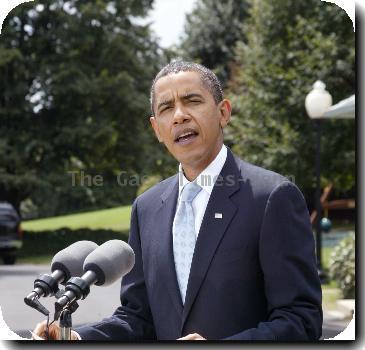India says it will slow carbon dioxide emissions growth by 20-25 percent by 2020
By Muneeza Naqvi, APThursday, December 3, 2009
India to slow carbon emissions growth by 20-25 pct
NEW DELHI — India pledged Thursday to significantly slow the growth of its carbon emissions over the next decade, becoming the last major emitting country to announce a climate change policy before a U.N. summit opens next week.
The plan is less aggressive than those announced by the U.S. and China in the last two weeks, and one critic called it nothing more than a reiteration of the status quo.
But the pledges gave momentum to negotiations on emission limits, which had been snagged for months while three of the largest emitting countries waited for each other to make the first move.
Environment Minister Jairam Ramesh told Parliament that India plans to reduce the ratio of pollution to production by 20 to 25 percent compared with 2005 levels, but it would not accept a legally binding emissions reduction target.
The emissions measure, known as “carbon intensity,” means India’s emissions will keep rising but at a quarter of the pace they would otherwise have done.
“We must be flexible without compromising basic national interests,” Ramesh said, acknowledging that emissions will continue to grow as India moves toward a more energy efficient economy.
India ranks fifth in world carbon dioxide emissions, accounting for 4.7 percent of the world’s emissions. The U.S. and China emit roughly 40 percent of the world’s emissions, with Russia and Indonesia completing the top five emitting countries.
One critic dismissed India’s plan as insignificant. It merely justifies the low standard set by the U.S., said Sunita Narain of the New Delhi-based Center for Science and the Environment.
“This reiteration of India’s existing domestic commitment so close to Copenhagen is being done to provide a cop-out for the Americans … and will endorse the weak, meaningless commitment of the Americans,” she told The Associated Press.
Ramesh said that India’s carbon intensity had dropped by 17.6 percent from 1990 to 2005, and that government experts agreed further reduction was possible.
Per capita emissions are low in India — the government says the average Indian produces one ton of carbon dioxide a year, compared with about 20 tons per person in the U.S. Its 1.2 billion-strong population is what makes it one of the world’s leading emitters of greenhouse gases.
The U.N. convenes a two-week 192-nation conference on Monday in Copenhagen intended to fashion the outline of a treaty to control greenhouse gas emissions. The agreement, to be completed in six to 12 months, seeks to check the rise in global temperatures that scientists warn could lead to devastating results in rising sea levels, shrinking access to drinking water, shifting agriculture and spreading diseases.
Last week China announced it would cut its own carbon intensity by 40 to 45 percent from 2005 levels by 2020. That means emissions would continue to grow as its economy expands, but at nearly half the rate they would have otherwise.
A day earlier, President Barack Obama announced a provisional commitment for the United States, pledging to reduce absolute emissions in the range of 17 percent by 2020. That translates to about 4 percent lower than 1990, the standard baseline used by most countries.
Also Thursday, the European Union outlined its key objectives for the summit, calling for a peak of global greenhouse gas emissions no later than 2020 and for quantified pollution targets for major developing countries. By mid-century, the EU said, carbon emissions should be half what they were in 1990. Developing countries should rein in their combined emissions by 15 to 30 percent compared to their currently predicted growth rate.
The proposal is certain to meet resistance from India, China and other major developing economies who say setting a peak and a global emission cap would limit their prospects for growth and prosperity.
In India’s Parliament, the environment minister described a rigid path to slowing its emissions. The government will introduce mandatory fuel efficiency standards in 2011, enforce green building codes for greater energy efficiency and deploy cleaner technology in coal-fired power plants, Ramesh said.
The plan was welcomed by the Greenpeace environment group, which said it was “a strong statement of intention to be a deal maker at Copenhagen.” But it said India should do more, given the urgency and magnitude of the global warming threat.
Max reported from Amsterdam. Associated Press writer Karl Ritter in Stockholm contributed to this story.
Tags: Asia, Barack Obama, China, Climate, Climate-india, Copenhagen, Denmark, East Asia, Energy, Environmental Concerns, Environmental Policy, Europe, Greater China, India, Manmohan Singh, New Delhi, North America, South Asia, United States, Utilities, Western Europe





